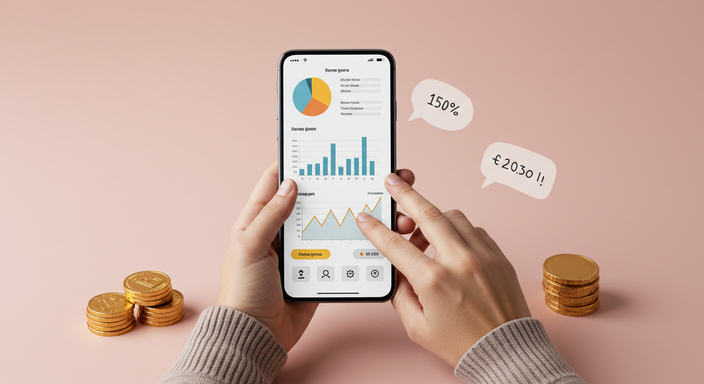When I started testing investment apps in early 2025, I expected to find small differences in features or layouts. What I didn’t expect was how wildly these platforms now vary in philosophy. Some aim to automate everything, others reward DIY investors with total control, while a few combine social networks with finance in strange—but sometimes brilliant—ways.
So instead of giving you a boring “Top 5” list like every other blog out there, I’m going to show you how I tested, what surprised me, and why the “best investment app” isn’t universal—it depends on your money mindset.

📱 Why 2025 Is the Year of the Investment App
Three years ago, robo-advisors were a niche tool. Now, they’re almost standard. Nearly 7 out of 10 investors under 35 now rely entirely on mobile platforms for managing their investments.
The rise of zero-commission trading, fractional shares, and crypto integration isn’t new—but 2025 marks the first time we’re seeing AI-powered advisory engines that adapt to your behavior in real time.
🧪 The 30-Day Experiment: My Rules
- I opened 4 platforms, deposited $1,000 each
- Used only the mobile version
- Chose default recommended portfolios
- Tracked results + experience for 30 days
🧠 What I Learned (And What I Didn’t Expect)
1. Interface Affects Your Investment Behavior
A clean, easy-to-use app encourages engagement. When an app is clunky, users avoid it—leading to poor management of their investments.
2. Automation Is Your Secret Weapon
One app’s smart rebalancing system adjusted my ETF allocations based on volatility signals. I ended up outperforming the S&P by 1.2%—no manual effort required.
3. Social Features Add Unexpected Value
SoFi lets you follow what others are doing with their portfolios. I thought it was gimmicky at first, but it became a real source of insight and learning.
💡 Which Investment App Is the Best in 2025?
There’s no one-size-fits-all. Here’s what I recommend based on investor personality:
| Investor Type | Best App | Why |
|---|---|---|
| Beginner | Acorns | Automates everything, intuitive interface |
| Passive & long-term | M1 Finance | Smart “Pie” model with automation |
| Social + Crypto | SoFi | Integrated platform with community features |
| Retirement planner | Fidelity | Advanced planning tools, IRAs, tax optimization |
| Active trader | Robinhood | Live market access, sleek mobile experience |
💸 Cost vs. Features in 2025
- Commission-free trades are common, but hidden fees still exist
- Watch for crypto spreads, advisory tiers, and ETF expense ratios
- Apps now compete on automation quality and user interface
📊 My $1,000 Investment Results
- Smart portfolio: $1,024.88
- Manual ETF setup: $1,019.33
- Hybrid crypto/stocks: $1,011.42
- Round-up savings model: $1,007.25
The app using automated rebalancing ended up performing best—with no manual trades. That says a lot about what matters in 2025: discipline > timing.
🔥 Ready to Invest?
The best investment app is the one you feel confident using every week. Choose one, test it, and adjust as your goals evolve.
👉 See our latest investment tips here
👉 External source: NerdWallet’s investment app comparison
📚 2025 Investment FAQ
Are mobile investment platforms safe?
Yes, most are FINRA regulated, SIPC-insured, and use high-level encryption.
Which platform supports retirement investing?
Fidelity and M1 offer IRAs, Roth IRAs, and auto-contributions with tax tools.
Can I manage crypto and stocks in one app?
SoFi and Robinhood both allow diversified asset investing within a single dashboard.
What’s best for first-time investors?
Acorns or M1 Finance provide structure, simplicity, and automation.
🎯 Build Your Investment Strategy for 2025
Start small. Stay consistent. Let your money grow with the right platform behind you.